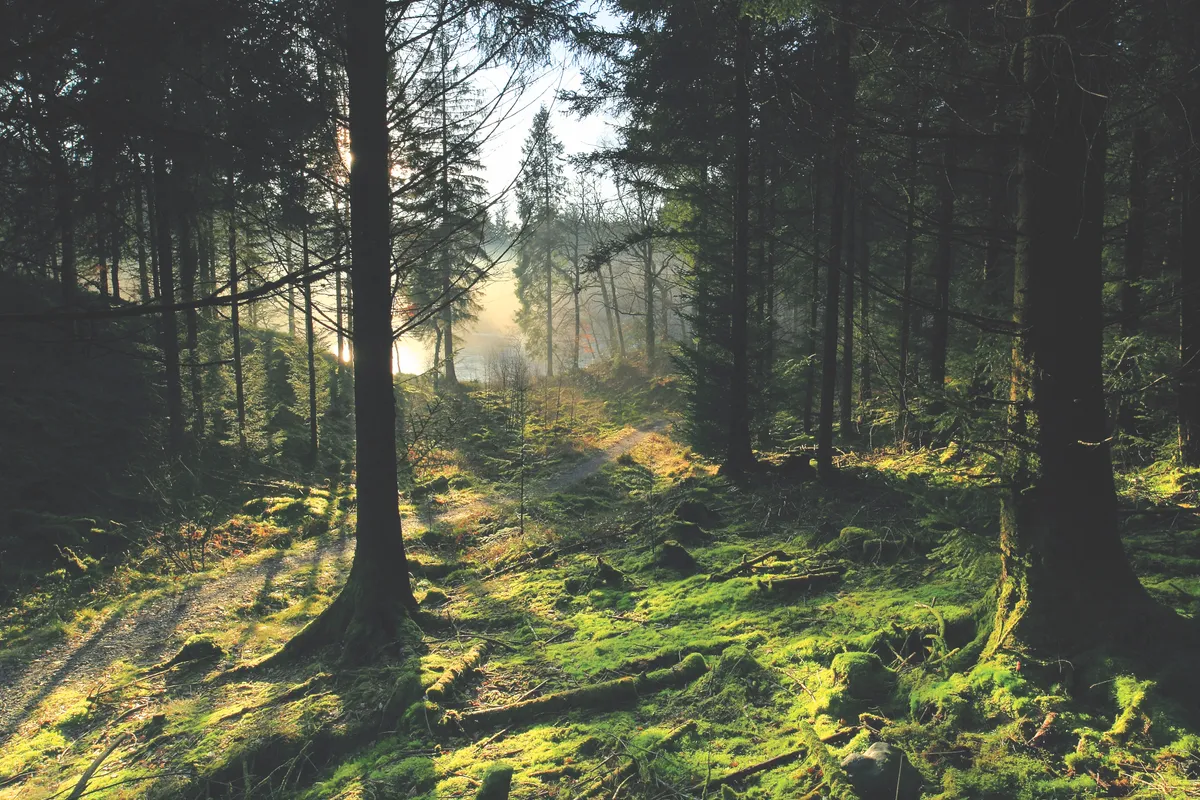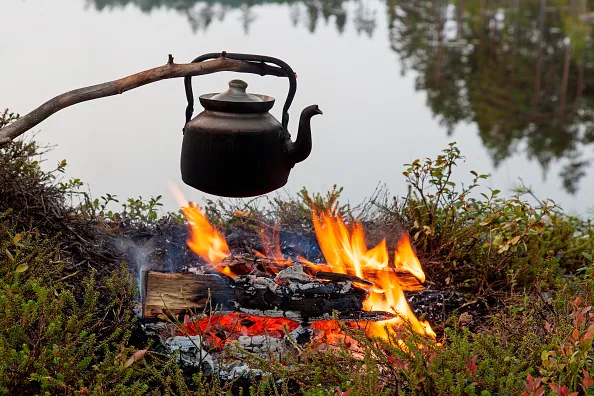More and more people are buying small patches of woodland for recreation and to provide firewood - but is it good for the health of our countryside asks Mark Cocker?
There’s nothing quite like a real fire. How many times do we hear that phrase repeated? But in my case, the pleasures of a real fire have had live-changing consequences. Not only did we have the wood-burning stove in the living room, we now also own the wood to keep it supplied with fuel.
Our wood is a five-acre block of tangled sallow and alder trees threaded around patches of tall herb and reedbed, and crisscrossed by a geometry of rather neglected old dykes. In spring, it rings to the sound of whitethroats and blackcaps; in summer, it is head-high in meadowsweet and willowherb. Come winter, there are woodcock and snipe feeding in the wet thickets. Of really fine old timber trees, it has just a solitary old oak. In truth, it isn’t exactly a wood – more like a classic piece of marsh carr in the Norfolk Broads. Nor did I buy it just to keep us supplied with logs.
But having our own fuel was undoubtedly a key motive. It’s also one of the major reasons why many other people are following suit. In the past 30 years, thousands, many of them town-dwellers without previous experience either of land ownership or woodland management, have also bought their own version of God’s acre.

Small-scale woodland management
Each year, about 500 small wood lots, usually less than 10 acres in size, change hands in Britain and expand the community of do-it-yourself owners. It doesn’t sound many, but only a few decades ago, virtually no one but established landowners, farmers or game-shooting syndicates had any interest in this kind of real estate.
In fact, one of the major modern dealers in new woods, Angus Hanton of Woodlands.co.uk, recalls a moment when he was selling a wood in Wales. One of his prospective buyers told him that he didn’t realise that buying a wood was allowed: surely there were laws to prevent the likes of him from owning woodland. In a way, that is one of the great pleasures of wood ownership. Mingled with all the obvious feelings of hands-on connection to trees and wild country is a grain of unexpected self-fulfilment. It is the thought that even someone like me or like you can own a wood.
At least, we can at a price. The cost per acre of small woods varies according to the size of the area, the region in which it is located, the accessibility of the site, and also according to the kinds of tree cover or other terrain encompassed by the lot. Usually, however, it is between £4,000 and £10,000 per acre, and generally the smaller the site, the higher the proportionate cost. Two acres in the Welsh borders may be at the higher end of this scale, but 13 acres of ancient woodland in Kent may be very close to the lower figure.
Yet there are strong financial benefits to wood ownership, other than simply a limitless supply of fuel for the fire (in an age of escalating energy prices this is increasingly significant). Woods have risen in value by about a third even in the past three years and, when managed commercially, they avoid inheritance tax, while the sale of the timber is free of income tax. As long as owners of small woods meet certain criteria, they can also avoid capital gains tax on resale.
Family heirlooms
Not that short-term profit is uppermost in the minds of most new owners of small woods. In a survey conducted by Woodlands.co.uk involving 149 new wood owners, not one of those questioned was looking to sell the site in the foreseeable future, while three-quarters of respondents hoped to leave the place to future generations of their own family.
This communality is writ large in the minds of many, who see the wood as a family focus for picnics and camping, or simply for getting their hands dirty in shared activity. Woods are also a place to connect with another kind of community: all the flowers, fungi, trees, insects, birds and mammals that use the site year round. Of those owners surveyed, almost nine out of 10 said that love of wildlife was a key factor in acquiring a wood.
In my own case, it was absolutely central. And what makes it seem all the more fulfilling is that the cropping of fuel wood fits perfectly with this larger concern for nature. One thing often overlooked about woods is the need to cut them down periodically. Contrary to many peoples’ expectations, cutting down a tree neither kills that individual organism, nor does it diminish the wider value of the wood.

The clearing of vegetation, section by section, is often the best thing that can happen. It allows light on to the otherwise shaded woodland floor, stimulating the ground flora and the presence of sun-loving insects such as butterflies or dragonflies, while increasing the overall variety and texture of the woodland habitat. Known as coppicing, this cyclical cutting of trees has been the basis of woodland management for more than 1,000 years. Today, three-quarters of new wood owners are either planting new trees or coppicing the old ones.
The revival of ancient techniques not only increases timber supply and brings benefits to the natural environment, it also does something more subtle and, arguably, more pressingly important.
It brings us into intimate connection with vigorous outdoor activity, amid the fresh air and a wealth of other lifeforms. In an age troubled by obesity, lack of exercise and more complex forms of disconnection that have been described as ‘nature-deficit disorder’, owning a wood is the best way I’ve found to reconnect me to the elemental world of greenery and wild places.
What to consider before buying woodland
- If you’re thinking of buying a wood, make sure you have time in your life to really enjoy it, as it will require a regular commitment. Also cancel any existing gym membership, because you now own your own gym. Woods offer the very best in outdoor exercise.
- One of the main sellers of small woods, Woodland.co.uk, introduces covenants at purchase to prevent sports shooting on the land. If sport is your goal, then be sure to research your wood carefully before you buy.
- A wood is like any other property purchase. You will have to engage the services of a solicitor, and professional fees and searches are not cheap. Expect to pay £1,000 or more.
- New owners of small woods will find themselves part of a vibrant community with all sorts of specialist events, publications and societies and community groups to advise you on how to make the most of your wood.
- The ownership of a chainsaw is almost unavoidable for any woodland management. Yet this invaluable tool requires specialist training and protective equipment to use safely and properly. Contact your local agricultural college to find out more.
- The Small Woods Association and the Royal Forestry Society provide information and support. They offer great networking opportunities and are major sources of information on all aspects of woodland ownership.
- Woodland owners will need public liability insurance and possibly chancel repair insurance, too. Be sure to research these liabilities carefully.